Terra Preta - Model of a Cultural Technique
by Hans-Peter Schmidt
Lessons from historical Agriculture
For decades anthropologists considered it a foregone conclusion that the Amazonian rain-forest could not possibly have allowed the emergence of a higher civilization, because significant civil and cultural achievements would have required the existence of large cities. Large cities in the Amazon have, however, been unthinkable, because the humus layer of rain-forest soils is too sparse to guarantee the food supply of hundreds of thousands people.
This explanation seemed so obvious that no one was seriously putting it into question and the reports of the Spanish conquistadors Francesco de Orellana picturing flourishing cities on ‘the great river’ were written off as mere legends. In the 1960s, however, unambiguous remnants of great indigenous civilizations were discovered at the confluence of the Amazon, Rio Negro and Madeira rivers. Still sceptical, scientists went out to conduct once again soil inspections and to find explanations as to how it could have been possible for the large populations of these cities to feed themselves. It was then that the researchers finally discovered what came to be called “Terra Preta” - the black earth of the Amazonian rain-forest, once created by these bygone civilizations.
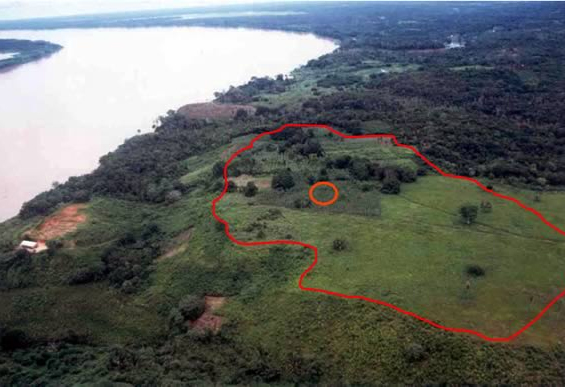
Microscopically, spectrally, chemically and physically the scientists examined the earthen back in their quest to uncover its secrets. Pottery, bones, traces of chicken manure, traces of human faeces, charcoal, ash and fish bones were among the substances discovered in the soil – a variety of organic waste which gradually made up the soil’s mighty humus layer. The theory quickly emerged that the secret component allowing for these incredibly fertile soils was the biochar. Word of this supposed miracle substance quickly spread, and in many places in the world charcoal, and soon thereafter biochar, came to be used on agricultural soils. Subsequently, in light of the very modest results in European fields, it took quite a dash of idealism not to lose heart in biochar’s potential as a panacea to the world’s problems. Fortunately there was no shortage of idealism, because the fact is that biochar is an extremely valuable agronomic tool - once you understand that it is not a fertilizer, but rather a very effective carrier for plant nutrients and provides an excellent habitat for microorganisms.
.
Biochar as a Carrier of Nutrients and a Habitat for Microorganisms
In order to quickly and effectively bring forth biochars soil-enhancing properties, the biochar must first be loaded with nutrients and become organically activated. Besides mixing the biochar with compost, there are numerous other methods for the activation of biochar, the production of organic fertilizers and Terra Preta like substrates.
Biochar is an extremely porous substance with a highly specific surface that has a surface area of up to 300 m2 per gram. Due to the high porosity of biochar, it is capable of soaking up to five times its own weight in water as well as adsorbing large amounts of the therein dissolved nutrients. This property is called the adsorption capacity (AC) of biochar.
Another important property of biochar, which goes to explain its particular nutrient dynamics, is its high cation exchange capacity (CEC). The CEC of biochar is a measure of its ability to bind positively charged ions such as ammonia and ammonium, to its surface, and to make those substances available again to plants and microorganisms under particular circumstances. A high CEC prevents the leaching of positively charged mineral and organic nutrients and, overall, provides a higher total nutrient availability.
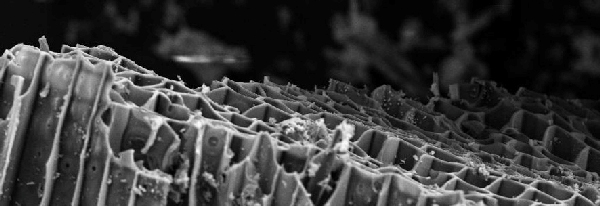
The high CEC and AC values of biochar make it perfectly suitable as a carrier of nutrients. The nutrients absorbed by the biochar offer microorganisms a perfectly suitable habitat, which in turn stimulates the overall micro-biotic activity in the soil, ultimately positively impacting the potential symbiosis between micro-organisms and plants.
.
Terra Preta – a highly sophisticated Nutrient Cycle
It took several decades to recognize that biochar was only one component of a complex agricultural system. To understand this complex system, a deeper insight into the anthropology of Central and South America is required.
As the American Continent was being settled by humans at the end of the last ice age 13,000 years ago, mammoths, oxen, elephants, rhinos, horses and other big game were present. These animals, however, were not used to the presence of foraging people as they were in Europe, Asia and Africa. Each species of big game inhabited an isolated ecological niche, where no species threatened the existence of any other species. Only when man populated the new continent with his new hunting methods and sophisticated weapons, were these ecological niches destroyed and each major animal species, which could have later been used for animal husbandry, became extinct. (See Jared Diamond's highly recommended book:
For the later inhabitants of the Americas, like the Aztecs, Mayas, Incas, or Anasazi, the extinction of big game meant that they not only lacked the option to breed any livestock, but also that they could use no animals for agricultural work. The latter was also the reason why neither the wheel nor the plow found widespread application in these lands. These civilizations had to rely on native wild fruits, small animals and fish or horticulture in the woodland gardens to cover their food demand.
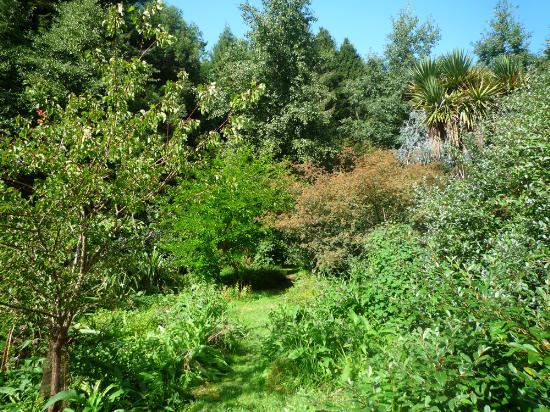
Instead of burning down forests and replacing them with vast agricultural lands, as is common practice in these regions in modern times, the Indians of the Amazon region took advantage of their forests by practicing horticulture in woodland gardens, which they plotted between fruit-bearing trees. The wood of the forest was used as a construction material, firewood and charcoal production. It was this latter use that made these woodland gardens so very fertile over hundreds of years. The Indian practice of mixing charcoal into the human and animal sewage and waste before dumping it on the fields of the woodland gardens, gradually improved soil fertility. This practice allowed a continual rise in yields, which over time allowed the planting of ever higher yielding crops.
Anthropologists have in recent years provably demonstrated very high population densities for the above-mentioned high cultures of the Americas. These masses of people could be fed only by very intensive land usage. The highest yield per unit area could be achieved through vertically planted mixed crop cultures and woodland gardens. This type of farming was very labour intensive. But labour forces, however, were readily available in the densely populated cities of these bygone civilizations.
Surrounding acreages were intensively used and it can now be assumed that one-hectare of woodland gardens on the Amazon could feed about 15 to 20 people. To achieve these high yields per unit area a sophisticated system of complementary mixed crop culture and, above all, an intelligent closed nutrient cycle had to be worked out. Only when the nutrients, which were taken out of the ground through intensive cultivation, were also continuously being returned to the soil could sustainable long-term cultivation with steady yields be achieved. In the case of Amazonian soils, it is critical that the nutrients are added in a fashion in which they will not be washed out by the tropical rains.
All these elements - vertical and horizontal mixed crop cultivation, systematically organized labour, closed nutrient cycles and humus formation - were inextricably linked factors, allowing the maintenance of a stable supply of food and resources, laying the foundation for the stability of these giant garden cities. Since there was no livestock manure to be used as fertilizer, it was the digestive tracts of the population at large which had to be utilized for the production of the necessary organic fertilizer in the form of sanitized faeces.
To avoid the risk of the spread of infectious diseases from the daily processing of sewage into fertilizer, it seems that charcoal played a crucial part. Regularly sprinkling lavatories with charcoal not only diminished odour, but also drastically reduced the spread of germs. Furthermore, it is possible that the toilets were additionally sanitized with lactic acid enzymes. One can certainly assume that hygienic care was the primary reason for the use of charcoal. That this usage also had a significant effect on nutrient efficiency and the build up of humus in the soils was possibly not even known at the time. Nonetheless, the charcoal was an inseparable part of a functioning nutrient cycle system.
The closed nutrient cycle system of Terra Preta was based on the following two foundations: firstly, the fertility of the soil could be sustained only if the food scraps and other organic waste as well as the residual matter from the digestion processes being returned to the soils in an appropriate fashion; and secondly, the vertical structure of the species-rich woodland gardens maintained its humus formation potential as well as its crucial role in erosion mitigation over time.
.
Can the Terra Preta technique be applied to Central European Forestry?
To practice sustainable forestry, it is natural that a balanced flow of nutrients must be maintained. If only the debarked logs of trees are being removed from a mixed forest, while its crowns, young twigs, and bark left behind, nutrient deprivation of the forest will be minimal so that a rebalancing of the nutrients in the forest would only have to occur once every few hundred years. If, however, entire trees are being removed from the forest, with even the nutrient-rich young timber being utilized for industrial use, and in addition to that you are not dealing with a humus-building mixed forest, but a monocultural coniferous forest, then even the most selective logging will impact the forest’s nutrient and humus balance. In this case, at the very least a nutrient equilibrium would have to be carried out, for example by repatriating adequate amounts of wood ashes, every 40 to 80 years. Most importantly, forests would have to be appropriately mixed with deciduous trees in order to protect the forest humus.
As long as the European mixed forest remains and as long as no whole-tree harvesting is being carried out and no heavy soil-compacting machineries are being used, the mixed forest ecosystem can be viewed as extremely stable. The use of soil improvement techniques, such as fertilization, use of biochar, biochar compost (Terra Preta like substances), would neither be ecologically nor economically sensible for Central European forestry. Although the biochar would improve water retention capacity, and depending on the soil type also facilitate the build-up of humus, the use of biochar would be an unnecessary encroachment on a stable ecosystem.
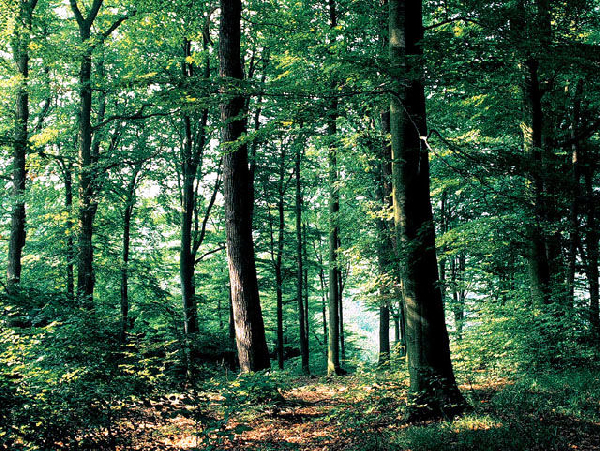
If, however, the objective is not a sustainable use of forest ecosystems, but rather the most efficient production of biomass as is the case of short-rotation plantations or agricultural forestry systems, then the heavy shift in the nutrient balance and the possibility of mechanical surface machining, would make the Terra Preta technologies once again very interesting. The more resources are removed from a soil or ecosystem, the more important it is to renew these resources sustainably and to close the nutrient cycles.
Carbon and nitrogen, which are continuously being fixed from the atmosphere by the agricultural ecosystem can, by means of removal of biomass from local systems, be channelled to other nutrient and energy cycles. All other non-naturally-replenishing nutrients must, however, be returned appropriately. To this end, the Terra Preta system offers a very promising solution, as nutrients are not being returned solely in the mineral or synthetic form, which results in significant run-off and environmental pollution, but in an organically bound form, allowing for nutrient cycles to be closed.
.
Interconnectedness of Forestry and Agriculture
Comparing today's agriculture to the bygone Terra Preta agriculture of the Amazon, the most striking fact we are faced with is that present acreage yields are at least four times lower than they were in the rain forest. The second striking fact is that despite several tens of thousands of actively working university-trained agronomists, we are currently engaging in soil degradation rather than soil improvement and nutrient balances are being maintained only in appearance. Finally, we must not forget that today, for the production of 1 calorie of food more than 15 calories of energy must be spent, whereas in woodland gardens a net positive cost-benefit energy ratio is realized.
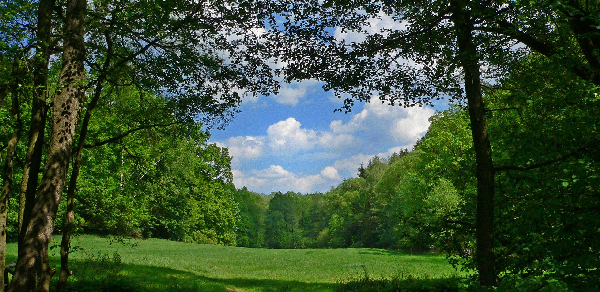
One of the main features and also a fundamental element of the Terra Preta system’s recipe for success is its close interconnectedness of agriculture and forestry. In the Terra Preta system as well as modern agricultural forestry systems, agricultural management units are not measured in units of land, but rather in terms of volume, where the vertical levels are as important as the horizontal zoning. The different levels - the root layer, herbaceous layer, shrub layer and lastly the tree layer - are coordinated in such a fashion that the yields can be optimized in long-term cycles.
In the history of Central European land usage, agricultural and forest lands were also not regarded as separate economic domains, but rather as highly inter-linked entities. Due to the use of draft animals and extensive animal husbandry and hunting practices, however, no woodland gardens similar to the ones in South America emerged because cattle were already extinct. Instead, a variety of mixed systems such as clearance cultivation, pasture woodlands, standard fruit tree meadows, low-woods, middle-woods and forest-acre rotations, in which the various elements such as agriculture, pastures and fruit, raw material and nutrient acquisitions were coordinated efficiently with one another.
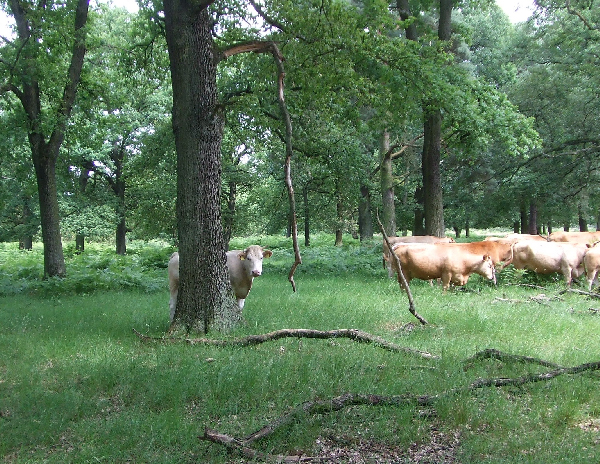
In order to strengthen and maintain the efficiency of agricultural systems, these traditional Central European agricultural forestry systems should once again move more prominently into focus. This would, for example through active clearance cultivation, create microclimates, which would in the face of climate change, significantly increase the adaptability of agricultural systems. It would be equally important to take long-term cycles into consideration, so that trees can be incorporated in the crop rotation cycles.
The planting of tree-rows, forest islands or seam zones around clearing fields improves not only the microclimate of the fields, but also reduces wind speeds by 15 - 20%, prevents erosion, reduces evaporation rates, reduces the risk of frost, increases humus formation and improves overall economic viability.
.
Impetus from the History of Agriculture
While peoples of nearly all epochs of history believed that the golden age lay behind them and that their forefathers knew better how to tame the natural and spiritual resources at their disposal to ease the hardships of everyday life, this belief was starkly reversed at the dawn of the industrial revolution of the late 18th and early 19th century. From then on, the ideology of progress took a hold of society, where the locus of all wisdom and all knowledge was placed in the future and the past was dismissed as a mere step on the ladder towards knowledge and development.
The past was, abruptly, worth only a contemplative glance and history became the subject of a pleasant, but ultimately useless spiritual pursuits, leading to the fatal arrogance, which denied the knowledge and wisdom of our forefathers and bygone peoples and civilizations any bearing on our present.
The discovery of the Terra Preta soils in the Amazon and the rediscovery of clearance cultivation in Central Europe are two of the few examples where it can be said that archaeology and anthropology stumbled upon ancient techniques which could lead to a major impetus to the solution of major problems in modern times.
At a time when agricultural soils are being degraded, if not completely destroyed, by herbicides, pesticides, eutrophication and erosion, the pressure for food stability for an increasingly overpopulated planet is being continually used as the very excuse to continue with current agricultural practices instead of shifting to more sustainable farming practices. Measures are called for which can lead to the development of intelligent strategies that can raise agricultural productivity, while at the same time protect the climate and preserve nature. The interlinkage of forestry and agriculture, as well as the closing of nutrient cycles, as it was practiced on the Amazon as well as the Elbe rivers over a period of many centuries, could become the basis of a modern strategy for an efficient and sustainable use of natural resources, paving the way to a sustainable bio-economy.
Translated by Thomas Rippel
Print version of the article in PDF-format
Elements of Climate Farming
Sequestration of Carbon
- Plants as carbon pumps (assimilation)
- Humus economy (fixation of carbon)
- Use of biomasse for the production of energy and raw materials
Closing Nutrient Cycles
- Increase of nutrient- and water efficiency
- Recycling of plant nutrients
- Reducing nutrients losses
Rebalancing of Ecosystems
- Fostering biodiversity
- Increase of humus content
- Creation of micro-climates
- Agro-forrestry, mixed-cultures, crop rotation, green cover systems
- reduction of pesticedes

Marko Heckel
2012-01-01 12:30
Hallo Hans-Peter
Hast Du Quellen zum Lichtungsfeldbau und der geschlossenen Kreislaufwirtschaft im Elbegebiet? Das würde ich gerne vertiefen.
Zum Hudewald oder Hutewald noch einige Anmerkungen. In einem Landschaftsplanungsseminar bei der Betrachtung von Karten aus dem 18.Jh. lernte ich, dass die Hute der wesentliche Waldzerstörer war. Der Wald wurde massiv ausgedünnt, Unterwuchs verhindert und das aufwachsen junger Bäume unmöglich. Wobei vor allem Schafen, Ziegen und Rinder das Problem waren, die wühlenden Schweine stören weniger. Selbst der dünne noch vorhandene Wald war sehr viel weniger produktiv und funktional als heute.
In dem mir von Dr. Haiko Pieplow empfohlenen Buch "Landschaftsentwicklung in Mitteleuropa" (Bork, schwierig) wurden mir zur Waldentwicklung die Augen geöffnet. Durch Hutung, Abholzung und Ackerbau hatte der Wald im 14. Jh. auf 15% der Fläche abgenommen (18.Jh. war auch schlimm). Katastrophale Erosion und Verwüstung und Regionalklimaänderung (Vb-Wetterlage) waren die Folge. Gefolgt von Hungersnöten und Pest. Die Zusammenhänge sind atemberaubend. Mit heute 31% in Deutschland stehen wir also im historischen Vergleich nicht schlecht da. Jetzt ist ein Umbau in Mischwald und Agroforstwirtschaft angesagt.
Gruß Marko
hps
2012-01-01 12:41
Salut Marko, zum Lichtungsfeldbau gibt es eine gute Darstellung in Hansjörg Küster "Geschichte des Waldes", da sind auch eine Reihe weiterführender Quellenangaben zu finden. Die interessanteste Zeit des Lichtungsfeldbaus fand allerdings bereits vor dem Mittelalter statt. So wie alle landwirtschaftlichen Systeme entscheidet sich auch der Erfolg von Waldgärten, Hudewald, Lichtungsfeldbau usw. an der Beachtung der jeweils angepassten Wirtschaftsintensität. Ebenso wie man Weiden durch zu hohe Viehdichten rasch überweiden kann, können auch Hudewälder durch zu hohe Viehdichten schnell überlastet werden. Deine Beispiele aus dem späten Mittelalter sowie aus dem Beginn der Industrialiesierung zeigen dies sehr deutlich. Entscheidend ist nicht die Wahl des Bewirtschaftungssystems, sondern dessen nachhaltige Bewirtschaftung. Grüsse, hps
Marko Heckel
2012-01-01 12:44
Ich habe das Buch "Guns Germs and Steel" von Diamond begeistert verschlungen. Nach einigen Jahren und neuen Informationen kann ich den Folgerungen von Diamond nicht mehr zustimmen (besser "1491" von Mann). Die hier erwähnte Ausrottung der Großtiere in den Amerikas durch menschliche Jagd ist inzwischen sehr fragwürdig. Menschliche Siedlungsspuren die einige zehntausende Jahre älter als 13.000 Jahre sind wurden gefunden und das Besiedlungsalter verschiebt sich immer weiter in die Vergangenheit (siehe "1491"). Das katastrophale Ende der letzten Eiszeit scheint ein wahrscheinlicherer Kandidat für die Ausrottung der Großtiere. Alles was von "Guns, Germs and Steel" als wichtige Faktoren europäischer Überlegenheit übrig bleibt sind die Germs/Krankheiten. Es sieht tatsächlich so aus, als wenn ganze Völker sogar ohne direkten Kontakt zu den Europäern weggestorben sind an Pocken, Masern, Grippe, Malaria und mehr. Nur einer von 20 Indianern hat nach realistischen Schätzungen diese Krankheitswellen des ersten Jahrhunderts nach Columbus überlebt. Die laut Diamond angeblich überlegene LW Europas konnte mit der Produktivität der Inkas, Azteken oder Amazonier nicht mal im Ansatz mithalten. Diamond zwingt die Fakten zu sehr in seine Kausalkette um seine Frage nach der Überlegenheit Europas zu beantworten.
Ein neueres Buch das Terra Preta und sehr viel mehr berücksichtigt und ergebnisoffner ist "1491" von Charles Mann - die Amerikas vor Columbus - und taufrisch "1493" - die Amerikas und die Welt nach Columbus das Homgenocene (Das Zeitalter der Vermischung der Ökosysteme der Welt durch den Menschen)
Gruß Marko
hps
2012-01-01 12:58
Diamonds Hauptfrage nach der Überlegenheit gewisser (eurasischer) Kulturen ist auch meiner Ansicht nach die Hauptschwäche des Buches. Insofern bevorzuge ich auch sein einige Jahre später erschienenes "Collapse", auch wenn er dort ebenfalls die Fakten gern in seine Hauptthesen zwingt. Aus welchem Grund das Großwild in Amerika ausgestorben ist, ist unter Fachleuten nach wie vor umstritten. Entscheidend auch für die landwirtschaftliche Entwicklung in Amerika ist aber die Tatsache, dass es kein Großwild und entsprechend auch keine größeren Haustiere gab. Dass die Landwirtschaftlich vieler amerikanischer Hochzivilisationen höher war als selbst heute in Europa beschreibt Diamond durchaus, doch insofern Landwirtschaft nicht zu seinem Fachgebiet gehört, bleiben die Darstellungen, da gebe ich Dir recht, häufig etwas mangelhaft. Trotzdem finde ich Diamonds Bücher nach wie vor sehr inspirierend, weshalb er auch einen nicht zu unterschätzenden Einfluss auf die Debatten der Zivilisationsgeschichten genommen hat. Die beiden Amerika-Bücher von Charles Mann sind wirklich großartig und jedem zu empfehlen. Grüsse, hps
Horst Stöckl
2012-01-06 19:55
Hallo Herr Schmidt,
mein Interesse an Terra Preta ist durch einen Artikel in GEO, März 2009 geweckt worden: Amazoniens schwarze Sensation. Gelesen habe ich ihn wegen meines Interesse für Archäologie. Frage: Kennen Sie archäologische Fachliteratur, auch Bücher, in denen auch andere Kulturaspekte der alten Amazonier (Keramik, Werkzeuge, Siedlungsstrukturen, zeitliche Entwicklung etc.) etwas gründlicher behandelt werden als in dem GEO-Artikel?
Noch 2 Fragen:
Pflanzenkohle kein Dünger: Gilt dies uneingeschränkt oder nur annähernd? Immerhin enthält sie doch die Mineralien der Asche, die bei ihrer Verbrennung zurückbleiben würde. Ist das vernachlässigbar?
Rückführung von Holzasche alle 40 bis 80 Jahre, wenn die kompletten Bäume aus dem Wald herausgenommen werden: Das wird ja von vielen als eher schädlich eingestuft. Wie müsste es durchgeführt werden, damit kein Schaden entsteht? Vermischen mit Holzkohle? Sehr wenig auf einmal?
Stabiles Ökosystem eines nachhaltig bewirtschafteten Mischwaldes würde durch Pflanzenkohle unnötig angegriffen. Wodurch?
Grüße und vielen Dank
Horst Stöckl
hps
2012-01-06 21:04
Sehr zu empfehlen ist das Buch "1491" von Charles Mann. Im 9ten Kapitel, den aussführlichen Fussnoten und dem noch ausführlicheren Literaturverzeichnis finden Sie nahezu alles, was derzeit zu dem Thema veröffentlicht wurde.
Die Kohle enthalt tatsächlich eine Vielzahl an Mineralstoffen, doch sind diese entweder so stark an der Kohle gebunden, dass sie selbst mittelfristig nicht pflanzenverfügbar sind, oder sie liegen in Verbindungen vor, die nicht so leicht verfügbar gemacht werden können.
Ich halte Asche auch nicht unbedingt für eine besonders gute Walddüngung. Mit der Bemerkung im Artikel ging es mir vor allem darum, dass Nährstoffe, die dem System entzogen werden, auch wieder zurückgeführt werden müssen, und dass dies selbstverständlich auch für den Wald gilt.
Mit besten Grüssen, hps
Friedrich Georg
2012-04-14 19:56
Mich interessiert, was ein Privatgärtner zur Bodenverbesserung (Humusbildung) tun kann. Kompost allein reicht ja wohl nicht aus, um die entnommenen Nährstoffe zu ersetzen. In welchem Verhältnis sollte Biokohle oder z.B. Lavakörner zugemischt und in welchem Zeitraum wie tief in die Erde eingebracht werden?
Silvio Waser
2012-10-27 06:34
Heute wurde ein Bericht über mein Buch, das Waldgarten-Prinzip-In Gemeinschaft auf drei Ebenen pflanzen Silvio Waser, Neue-Wege-Gehen Verlag veröffenticht unter dem Titel: Ein Paradies für Schmetterlinge und Bienen..siehe unter Landbote-Archiv.(Tageszeitung von Winterthur)
Herzliche Grüsse Silvio Waser
C. Lenz
2017-01-30 04:09
Hallo! Mit Interesse bin ich gerade den Kommentaren gefolgt. Kürzlich habe ich gelesen das es neue Hinweise gibt das das Austerben der großen Tierarten in Amerika dem Ende der letzten großen Eiszeit zuzuschreiben ist. Neue Untersuchungen zeigen das wahrscheinlich vor ca 11000 Jahren ein oder mehrere Kometen in die Nord Amerikanische Eiskappe einschlugen und so ein (katastrophal) schnelleres Abschmelzen verursacht haben. Die gängige Meinung ist das es ein langsames Abschmelzen mit kleinen Schmelzwasserpulsen gab.
Einige Geologen vergleichen die Wassermengen die sich in diesem Szenario bewegten mit dem Golfstrom und halten Meeresspiegelanstiege von über 10m über Nacht für möglich. Immer wieder über Wochen.
http://cometresearchgroup.org/comets-diamonds-mammoths/
Eine solche Katastrophe würde auch das Austerben der Megafauna besser erklären als die Steinzeitlichen Jäger die allem Anschein nach Industriell die Megafauna abgeschlachtet haben. Da traut sich der Mensch zuviel schlechtes zu... ;)
https://www.youtube.com/watch?v=tys4ArbWH6Q
Liebe Grüße und danke für eure harte Arbeit!
C. Lenz
Benjamin
2018-07-11 12:53
Sehr geehrter Herr Schmidt,
mich interessiert im Zusammenhang mit der Terra Preta - Herstellung der Zeitpunkt der Zumischung von Holzkohle zum Kompost.
Die Holzkohle stelle ich selber her, sie hat einen pH-Wert von geschätzt über 10 und ist nach meiner Beobachtung und lt. einer Aussage von Dr. Jürgen Reckin (siehe im Internet unter seinem Namen) lebensfeindlich für Mikroorganismen und Regenwürmer. Sollte die Kohle zur Aufladung dem fertigen Kompost zugegeben werden, oder neutralisiert sich diese so schnell, dass der Beginn der Rotte durch sofortige Zumischung beim Kompostansatz unwesentlich oder garnicht verzögert wird?
Freundliche Grüße
Benjamin
hps
2018-07-11 15:26
... Herr Dr. Reckin hat der nachhaltigen Landbewirtschaftung viele wertvolle Impulse verliehen und ich teile mit vielen die Bewunderung für ihn. Woher her allerdings sein oft wiederholte Aussage von der Lebensfeindlichkeit der Pflanzenkohle nimmt, bleibt vollkommen schleierhaft. Pflanzenkohle tut nicht nur der menschlichen Verdauung gut und kann daher in der Apotheke gekauft werden (pH > 10), es konnten auch positive Auswirkungen auf alle Nutztiere und zahlreiche Wildtiere nachgewiesen werden. Auch gibt es umfassende wissenschaftliche Metastudien, diie zeigen konnten, dass die Einbringung von Pflanzenkohle in Böden die mikrobielle Biodiversität sowie die Anzahl der Zellen steigert. Auch konnte vielfach nachgewiesen werden, dass Regenwürmer Erde mit Pflanzenkohle derjenigen ohne Pflanzenkohle bevorzugen (Regenwurmvermeidungstest) und Pflanzenkohle wird häufig in Wurmkompostierung eingesetzt. Worauf sich die Lebensfeindlichkeit von zertifizierter Qualitätspflanzenkohle (EBC) beziehen könnte, bleibt schleierhaft.
Da die Pflanzenkohle die Kompostierung von Biomassen in allen verschiedenen Phasen der Kompostierung fördert, wird empfholen, die Pflanzenkohle so früh wie möglich mit der zu kompostierenden Biomasse zu vermischen.
Mit freundlichen Grüssen, Hans-Peter Schmidt